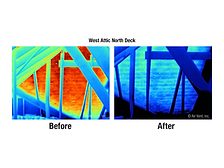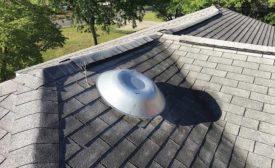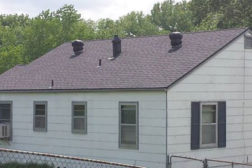Home » Keywords: » attic vents
Items Tagged with 'attic vents'
ARTICLES
Caught on Camera: 5 Attic Ventilation Mistakes
Mistakes in installing attic ventilation and how to fix them
Read More
Top Ten Air Vent Tips for Roofers From the Field
With Winter Approaching, Roofing Pros Across North America Share their Best Residential Attic Ventilation Tips that have Helped them on the Job
Read More
Get our new eMagazine delivered to your inbox every month.
Stay in the know on the latest roofing industry trends.
SUBSCRIBE TODAY!Copyright ©2024. All Rights Reserved BNP Media.
Design, CMS, Hosting & Web Development :: ePublishing








